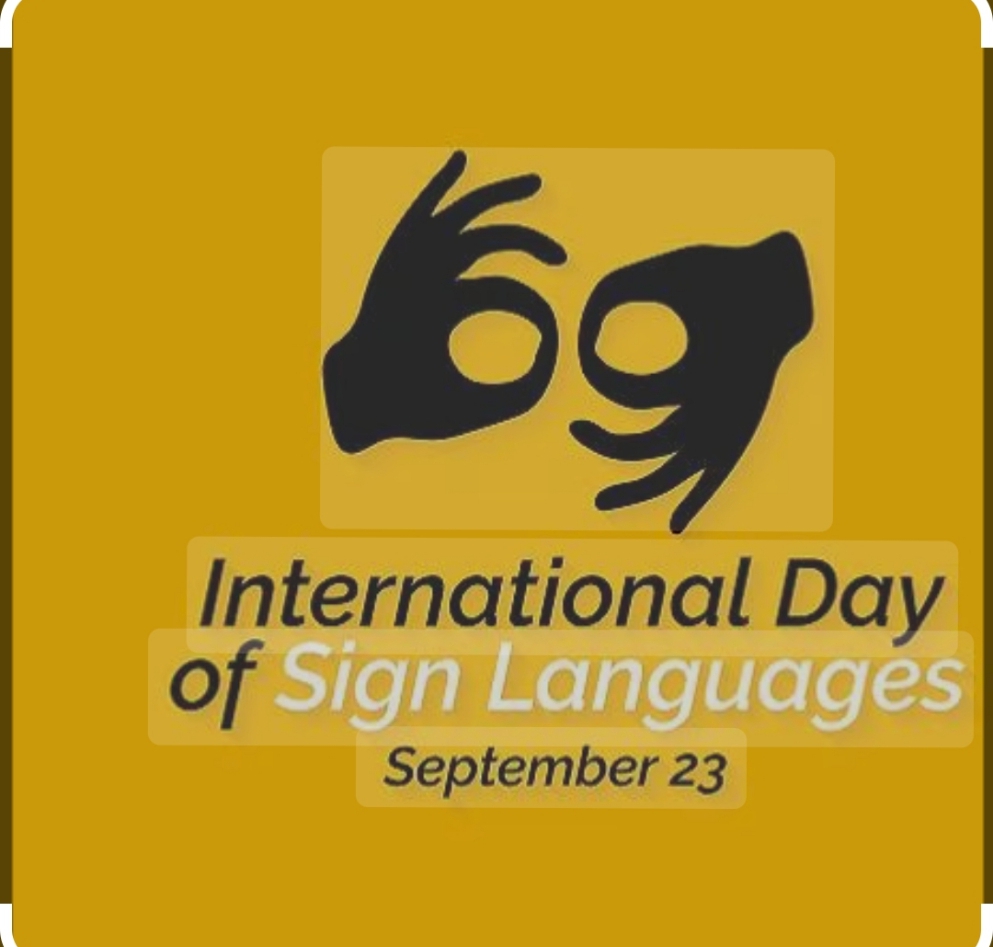FCRPD joins the deaf community in celebrating the international day of Sign language.
The International Day of Sign Language is celebrated annually on September 23, a day dedicated to raising awareness of the importance of sign language in the full realization of human rights for deaf individuals. Established by the United Nations General Assembly in 2017, this day aligns with the principles of inclusion, equality, and diversity that are central to human rights frameworks.Historical BackgroundThe date of September 23 was chosen to commemorate the founding of the World Federation of the Deaf (WFD) in 1951. The WFD is a global non-governmental organization that works to protect and promote the rights of the Deaf community. It aims to foster international cooperation to improve the status of national sign languages and promote their recognition as legitimate languages with their own grammatical structures.The observance of this day is closely connected to the broader International Week of the Deaf, which brings attention to the global issues affecting the Deaf community. Both events highlight the necessity of sign language in ensuring that deaf individuals have access to information, education, and the opportunity to participate fully in society.Sign Language: A Vital Tool for InclusionSign languages are natural languages with their own rules and structure. They are not simply translations of spoken languages but rather fully developed forms of communication with their own syntax, grammar, and idiomatic expressions. Different countries and regions have their own sign languages, such as American Sign Language (ASL), British Sign Language (BSL), and French Sign Language (LSF), among many others.For many deaf individuals, sign language is the primary means of communication, and it plays a critical role in their sense of identity and belonging to a community. However, despite the growing recognition of sign languages, many deaf individuals still face significant barriers. These include limited access to sign language interpreters, underrepresentation in media, and lack of educational resources in their native sign languages.Why This Day Matters1. Raising Awareness: The International Day of Sign Language shines a spotlight on the challenges and triumphs of the Deaf community. It reminds the world of the need for equitable policies and practices that respect the rights of all individuals, regardless of their hearing ability.2. Promoting Inclusion: Sign language is vital for the social, political, and economic inclusion of deaf people. The celebration of this day encourages governments, organizations, and individuals to take action to support deaf communities by recognizing their languages and ensuring equal access to resources.3. Education and Accessibility: In many countries, deaf children lack access to education in their own sign language, which affects their academic performance and limits their opportunities. International Day of Sign Language encourages nations to invest in sign language education, both for deaf individuals and for the wider community, to create a more inclusive society.4. Human Rights: Language is key to the exercise of human rights. The United Nations Convention on the Rights of Persons with Disabilities recognizes sign language as a human right, asserting that deaf individuals have the right to express themselves in their native sign languages.Global Efforts and InitiativesCountries around the world celebrate the International Day of Sign Language with various activities, including sign language workshops, cultural events, and media campaigns. Governments and organizations often partner with deaf communities to create initiatives that promote greater visibility of sign languages in public life.One notable initiative is the International Sign Language Challenge, in which participants share videos of themselves using sign language phrases, thereby spreading awareness through social media platforms. Many educational institutions also hold events to teach basic sign language to students, helping to break down communication barriers.In 2024, the theme for the day continues to emphasize the importance of sign languages in achieving a more inclusive society where deaf individuals can participate equally in all areas of life. This aligns with the broader Sustainable Development Goals (SDGs), which aim to leave no one behind by fostering inclusion for all marginalized communities.ConclusionThe International Day of Sign Language is a powerful reminder of the significance of linguistic diversity in ensuring the equal rights and dignity of all individuals. It’s an opportunity to celebrate the beauty and richness of sign languages and to renew global commitments to improving the lives of deaf people. The efforts of deaf communities, advocates, and allies worldwide are central to creating a more inclusive future where sign languages are fully recognized, respected, and integrated into everyday life.By raising awareness and advocating for the rights of the Deaf community, this day plays a crucial role in promoting a more just and inclusive world for all.With all these said. FCRPD is calling on the Government to enforce policies that will make sign language as part of the languages taught in schools and communities. We are also urging them to creat employments and accessibility for persons living with heard of hearing.


